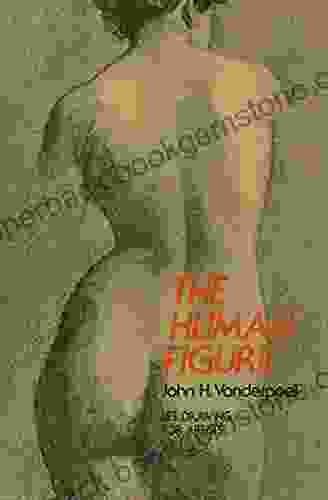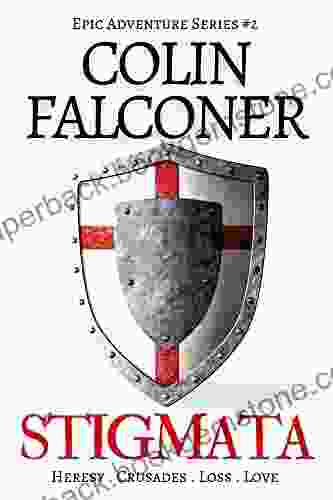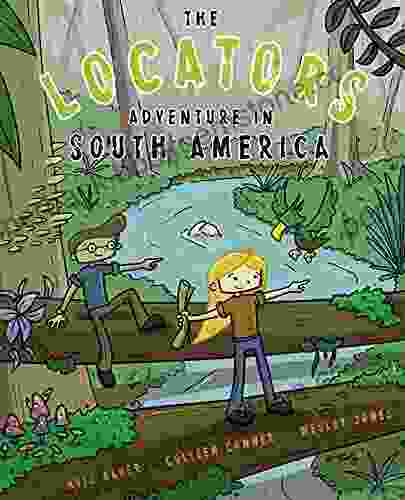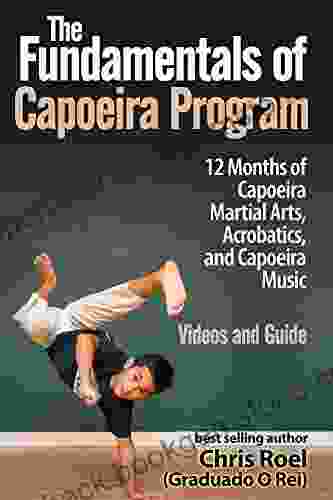The Human Figure: Dover Anatomy for Artists: A Comprehensive Guide to Human Anatomy for Artists, Illustrators, and Designers

The Human Figure: Dover Anatomy for Artists is a comprehensive guide to human anatomy for artists, illustrators, and designers. This book provides a detailed overview of the human body, from the skeletal system to the muscular system, and includes over 400 illustrations.
4.4 out of 5
| Language | : | English |
| File size | : | 20978 KB |
| Text-to-Speech | : | Enabled |
| Screen Reader | : | Supported |
| Enhanced typesetting | : | Enabled |
| Print length | : | 239 pages |
| Lending | : | Enabled |
The Skeletal System
The skeletal system is the framework of the human body. It provides support, protection, and movement. The skeletal system is made up of bones, cartilage, and ligaments.
Bones are hard, white tissues that make up the majority of the skeletal system. Bones are strong and durable, and they provide support for the body. Bones also protect the organs of the body from injury.
Cartilage is a soft, flexible tissue that is found in the joints and between the bones. Cartilage helps to reduce friction and wear and tear on the bones.
Ligaments are tough, fibrous tissues that connect bones to each other. Ligaments help to keep the bones in place and prevent them from dislocating.
The Muscular System
The muscular system is responsible for movement. The muscular system is made up of muscles, tendons, and ligaments.
Muscles are soft, elastic tissues that can contract and relax. Muscles are attached to bones by tendons. Tendons are tough, fibrous tissues that transmit the force of muscle contractions to the bones.
Ligaments are tough, fibrous tissues that connect muscles to bones. Ligaments help to keep the muscles in place and prevent them from tearing.
The Nervous System
The nervous system is responsible for communication and control. The nervous system is made up of the brain, spinal cord, and nerves.
The brain is the central organ of the nervous system. The brain receives information from the senses and sends signals to the muscles and organs.
The spinal cord is a long, thin bundle of nerves that runs from the brain down the back. The spinal cord carries messages between the brain and the rest of the body.
Nerves are thin, white fibers that carry messages throughout the body. Nerves transmit signals from the brain to the muscles and organs, and they also send sensory information back to the brain.
The Circulatory System
The circulatory system is responsible for transporting blood throughout the body. The circulatory system is made up of the heart, blood vessels, and blood.
The heart is a muscular organ that pumps blood throughout the body. The heart is divided into four chambers: two atria and two ventricles. The atria receive blood from the body and the ventricles pump blood out to the body.
Blood vessels are tubes that carry blood throughout the body. There are three types of blood vessels: arteries, veins, and capillaries. Arteries carry blood away from the heart, veins carry blood back to the heart, and capillaries are tiny blood vessels that allow oxygen and nutrients to pass from the blood into the tissues.
Blood is a thick, red liquid that contains red blood cells, white blood cells, and platelets. Red blood cells carry oxygen from the lungs to the tissues, white blood cells help to fight infection, and platelets help to clot blood.
The Respiratory System
The respiratory system is responsible for breathing. The respiratory system is made up of the lungs, airways, and respiratory muscles.
The lungs are two large, spongy organs that are located in the chest cavity. The lungs are filled with air sacs called alveoli. Alveoli are where oxygen from the air is transferred into the blood, and carbon dioxide from the blood is transferred into the air.
The airways are a series of tubes that carry air from the nose and mouth to the lungs. The airways include the trachea, bronchi, and bronchioles.
The respiratory muscles are the muscles that control breathing. The respiratory muscles include the diaphragm, intercostal muscles, and abdominal muscles.
The Digestive System
The digestive system is responsible for digesting food and absorbing nutrientes. The digestive system is made up of the mouth, esophagus, stomach, small intestine, large intestine, and rectum.
The mouth is the first part of the digestive system. The mouth is where food is chewed and mixed with saliva. Saliva contains enzymes that help to break down food.
The esophagus is a tube that carries food from the mouth to the stomach. The esophagus is lined with muscles that contract and relax to move food down to the stomach.
The stomach is a J-shaped organ that is located in the upper left abdomen. The stomach secretes gastric juices that help to break down food. The stomach also churns food to further break it down.
The small intestine is a long, narrow tube that is located in the lower abdomen. The small intestine is where most of the digestion and absorption of nutrients takes place. The small intestine is lined with villi, which are small finger-like projections that increase the surface area for absorption.
The large intestine is a wider, shorter tube that is located in the lower abdomen. The large intestine is where water and electrolytes are absorbed from the food. The large intestine also stores waste products until they are eliminated from the body.
The rectum is the last part of the digestive system. The rectum is where waste products are stored before they are eliminated from the body.
The Urinary System
The urinary system is responsible for removing waste products from the body. The urinary system is made up of the kidneys, ureters, bladder, and urethra.
The kidneys are two bean-shaped organs that are located in the upper back. The kidneys filter waste products from the blood. The kidneys also produce urine, which is a liquid that contains waste products.
The ureters are two thin tubes that carry urine from the kidneys to the bladder. The bladder is a muscular organ that stores urine. The urethra is a tube that carries urine from the bladder to the outside of the body.
The Reproductive System
The reproductive system is responsible for reproduction. The reproductive system is made up of the reproductive organs and the hormones that control reproduction.
The reproductive organs include the testes, penis, ovaries, uterus, and vagina. The testes are two small organs that are located in the scrotum. The testes produce sperm. The penis is a male organ that is used for sexual intercourse and urination. The ovaries are two small organs that are located in the pelvis. The ovaries produce eggs. The uterus is a pear-shaped organ that is located in the pelvis. The uterus is where a baby grows and develops during pregnancy. The vagina is a tube that carries menstrual blood and babies out of the body.
The hormones that control reproduction include testosterone and estrogen. Testosterone is a hormone that is produced by the testes. Testosterone is responsible for the development of male characteristics, such as a deep voice and facial hair. Estrogen is a hormone that is produced by the ovaries. Estrogen is responsible for the development of female characteristics, such as breasts and a wider pelvis.
The Human
4.4 out of 5
| Language | : | English |
| File size | : | 20978 KB |
| Text-to-Speech | : | Enabled |
| Screen Reader | : | Supported |
| Enhanced typesetting | : | Enabled |
| Print length | : | 239 pages |
| Lending | : | Enabled |
Do you want to contribute by writing guest posts on this blog?
Please contact us and send us a resume of previous articles that you have written.
 Best Book
Best Book Page Flip
Page Flip Bookshelf
Bookshelf Literary loom
Literary loom Chapter
Chapter Bookish
Bookish PageTurner
PageTurner Bibliophile
Bibliophile Story
Story Inkwell
Inkwell Bookworm
Bookworm Labyrinth
Labyrinth Plot Twist
Plot Twist Prose
Prose Paperback
Paperback Storyteller
Storyteller Sanctuary
Sanctuary Fiction
Fiction Reading
Reading Chronicle
Chronicle Read
Read Alan O Brien
Alan O Brien Ros Per
Ros Per John G Breslin
John G Breslin Michael Wise
Michael Wise Tammy Ruggles
Tammy Ruggles Chad Zunker
Chad Zunker Ben Street
Ben Street Tom Sito
Tom Sito Birgit O Connor
Birgit O Connor James Goddard
James Goddard Patrick Symmes
Patrick Symmes Nelson Demille
Nelson Demille Koloman Moser
Koloman Moser Barry Lord
Barry Lord Dean A Kowalski
Dean A Kowalski Faye Kellerman
Faye Kellerman Esmeralda Santiago
Esmeralda Santiago Poppy Evans
Poppy Evans Billie Holiday
Billie Holiday Shing Schih
Shing Schih Lisa Congdon
Lisa Congdon Eva Tulene Watt
Eva Tulene Watt Mateo Askaripour
Mateo Askaripour George H Gisser
George H Gisser Philip Guston
Philip Guston Jessica Marting
Jessica Marting Philip Ball
Philip Ball Tim Rangnow
Tim Rangnow Bruce Hanington
Bruce Hanington Dan Dietz
Dan Dietz David Elliot Cohen
David Elliot Cohen Tim W Jackson
Tim W Jackson Dori Jones Yang
Dori Jones Yang Stephen Boss
Stephen Boss Ian J Malone
Ian J Malone Debbie Rose Myers
Debbie Rose Myers Stuart D Paine
Stuart D Paine Bengie Molina
Bengie Molina Josephine B Pasquarello
Josephine B Pasquarello Jpinsiders
Jpinsiders Bich Minh Nguyen
Bich Minh Nguyen Paul Kendall
Paul Kendall Hope Hart
Hope Hart Dennis E Taylor
Dennis E Taylor Stewart M Green
Stewart M Green Brad Lee
Brad Lee Dana Fox
Dana Fox Colin Falconer
Colin Falconer Keith Doyle
Keith Doyle Collins Dictionaries
Collins Dictionaries Ben J Harris
Ben J Harris Bebe Harper
Bebe Harper Nancy Kress
Nancy Kress Helen Thorpe
Helen Thorpe Bac Hoai Tran
Bac Hoai Tran Ravyn Wilde
Ravyn Wilde Spencer Shaw
Spencer Shaw F Scott Fitzgerald
F Scott Fitzgerald Staci Swider
Staci Swider Gary Wasserman
Gary Wasserman C Pierce Salguero
C Pierce Salguero Jennifer Wilson
Jennifer Wilson Shoko Tendo
Shoko Tendo Jordan Marie
Jordan Marie Michael Winter
Michael Winter Bernice Lerner
Bernice Lerner Peter Inglis
Peter Inglis Tyler Perry
Tyler Perry Monica Walters
Monica Walters Lucinda Fleeson
Lucinda Fleeson Deanne Stillman
Deanne Stillman James Joyce
James Joyce Partha Mitter
Partha Mitter C J Boyle
C J Boyle Bart King
Bart King Joseph Lanza
Joseph Lanza Laura Ling
Laura Ling Gavin Maxwell
Gavin Maxwell Wesley Jones
Wesley Jones Bobby Brown
Bobby Brown Fania E Davis
Fania E Davis Tershia Lambrechts
Tershia Lambrechts Becky Gilhespie
Becky Gilhespie Yvonne Blackwood
Yvonne Blackwood Barbara Grizzuti Harrison
Barbara Grizzuti Harrison Jonathan C Slaght
Jonathan C Slaght Charlie Jane Anders
Charlie Jane Anders Barbara Totaro
Barbara Totaro Benjamin Hochman
Benjamin Hochman Emily Spivack
Emily Spivack Lorraine De Meaux
Lorraine De Meaux Marina Warner
Marina Warner Diane Duane
Diane Duane Sarah Mirk
Sarah Mirk Gabrielle Hamilton
Gabrielle Hamilton Kolbie Blume
Kolbie Blume Jan V White
Jan V White Robert E Hampson
Robert E Hampson Yahrah St John
Yahrah St John Stephen C Baldwin
Stephen C Baldwin David E Lowe
David E Lowe Steve Huston
Steve Huston Lowell Angell
Lowell Angell Khadijah J
Khadijah J Dalili
Dalili Lucy Adlington
Lucy Adlington Jay Armstrong
Jay Armstrong Jenny Mckay
Jenny Mckay Olive Yong
Olive Yong Pam Flowers
Pam Flowers Barbara A Parish
Barbara A Parish Stanislaw Lem
Stanislaw Lem Ernst Rettelbusch
Ernst Rettelbusch George Lopez
George Lopez Zachary Leader
Zachary Leader Noret Flood
Noret Flood D A Miller
D A Miller Terese Marie Mailhot
Terese Marie Mailhot Barbara Hambly
Barbara Hambly William Lidwell
William Lidwell Deirdre Slattery
Deirdre Slattery Hal Erickson
Hal Erickson Dave Hill
Dave Hill Kenya Hunt
Kenya Hunt Beau Riffenburgh
Beau Riffenburgh Robert Morkot
Robert Morkot Terry Lee Stone
Terry Lee Stone Elisabeth Elliot
Elisabeth Elliot Edward Gibbon
Edward Gibbon Terry Compton
Terry Compton Donald N Thompson
Donald N Thompson Erica Davies
Erica Davies Yiyun Li
Yiyun Li Michael J Hayde
Michael J Hayde Nathalie Kalbach
Nathalie Kalbach Ceidrik Heward
Ceidrik Heward David Fisher
David Fisher Steve Ryfle
Steve Ryfle Sophia Rolle
Sophia Rolle Joan Reardon
Joan Reardon Carol Huber Cypher
Carol Huber Cypher Tiana Bighorse
Tiana Bighorse Bley Hack
Bley Hack Elaine A Clark
Elaine A Clark Seymour Morris Jr
Seymour Morris Jr Tim Stokes
Tim Stokes Gabrielle Euvino
Gabrielle Euvino Jodi Staniunas Hopper
Jodi Staniunas Hopper Hildegarde Mahoney
Hildegarde Mahoney Noel Riley Fitch
Noel Riley Fitch Umm Zakiyyah
Umm Zakiyyah Beverly Jenkins
Beverly Jenkins Lori Wilde
Lori Wilde Fiona Peart
Fiona Peart Rita Benn
Rita Benn Saxon Andrew
Saxon Andrew Wendy Tait
Wendy Tait Benjamin Drake
Benjamin Drake Sophie Cunningham
Sophie Cunningham Sarah Birnbach
Sarah Birnbach John Muir
John Muir Mary Matsuda Gruenewald
Mary Matsuda Gruenewald Barbara Raue
Barbara Raue Steven Campbell
Steven Campbell Ruth Silvestre
Ruth Silvestre Bolu Babalola
Bolu Babalola Barbara Chase Riboud
Barbara Chase Riboud Blair Howard
Blair Howard Maxime J Durand
Maxime J Durand Ben Shahn
Ben Shahn Brent Eviston
Brent Eviston Bet Borgeson
Bet Borgeson Bob Normand
Bob Normand Bonnie Barker
Bonnie Barker Mary Brave Bird
Mary Brave Bird Shanora Williams
Shanora Williams Jennifer Sewing
Jennifer Sewing Steve Berry
Steve Berry Zora O Neill
Zora O Neill Betsy Prioleau
Betsy Prioleau Betsy Beier
Betsy Beier Milind Mulick
Milind Mulick Mackenzie Phillips
Mackenzie Phillips Chevonne Clarke Bryan
Chevonne Clarke Bryan Ben D Over
Ben D Over Eric Henze
Eric Henze Robert Henderson
Robert Henderson Bill Bensley
Bill Bensley Sheila Montilla
Sheila Montilla Eliot Greenspan
Eliot Greenspan George Schindler
George Schindler William Black
William Black Helmut Kopka
Helmut Kopka Matthew Morgante
Matthew Morgante Lonely Planet
Lonely Planet Laney Salisbury
Laney Salisbury Jason Sperb
Jason Sperb Nick Petrie
Nick Petrie Mary Lou Andre
Mary Lou Andre James Ulyatt
James Ulyatt Bill Arnott
Bill Arnott Beverly J Armento
Beverly J Armento Richard Sorger
Richard Sorger Daniel Rachel
Daniel Rachel Joanne Hutchinson
Joanne Hutchinson Kristen Dutkiewicz
Kristen Dutkiewicz Rexford Govorchin
Rexford Govorchin Taylor Jenkins Reid
Taylor Jenkins Reid Eric Rauchway
Eric Rauchway Conn Iggulden
Conn Iggulden Ben Strand
Ben Strand Norman Lee
Norman Lee Glynn Stewart
Glynn Stewart Justin Woolley
Justin Woolley Ben Eastham
Ben Eastham Chris Roel
Chris Roel Bev Sellars
Bev Sellars Beebe Bahrami
Beebe Bahrami Greg Mitchell
Greg Mitchell Silvia Marina Arrom
Silvia Marina Arrom Brian Burke
Brian Burke Sergio Toppi
Sergio Toppi Mark Crilley
Mark Crilley Chris Nashawaty
Chris Nashawaty David Airey
David Airey Brandon Varnell
Brandon Varnell Eddie Chambers
Eddie Chambers Orestes Lorenzo
Orestes Lorenzo Bil Donovan
Bil Donovan Suzette Riddick
Suzette Riddick Tya Marie
Tya Marie Bandana Ojha
Bandana Ojha Billie Rae Bates
Billie Rae Bates Bill Plympton
Bill Plympton Mike Curato
Mike Curato Ian Nathan
Ian Nathan Boris Mihailovic
Boris Mihailovic Leon Smith
Leon Smith Diane Tuckman
Diane Tuckman Kao Kalia Yang
Kao Kalia Yang Gillian Gloyer
Gillian Gloyer J Dominique
J Dominique Margaret Kessler
Margaret Kessler Ea Hooper
Ea Hooper Saul Tanpepper
Saul Tanpepper Leo Buijs
Leo Buijs Ashley Jaquavis
Ashley Jaquavis Shirtaloon
Shirtaloon Benjamin John Coleman
Benjamin John Coleman Rainer Maria Rilke
Rainer Maria Rilke Micah Ian Wright
Micah Ian Wright Jane Pek
Jane Pek Barbie Scott
Barbie Scott Lena Corwin
Lena Corwin Nolan Clark
Nolan Clark Valerie L Winslow
Valerie L Winslow Charles Sturt
Charles Sturt Florencia E Mallon
Florencia E Mallon Douglas Brooke Wheelton Sladen
Douglas Brooke Wheelton Sladen Tom Wiener
Tom Wiener Barbara Lewis
Barbara Lewis Bob Elliott
Bob Elliott Tim Powers
Tim Powers James S A Corey
James S A Corey Michael Shaara
Michael Shaara Jonathan Lopez
Jonathan Lopez Lesley Downer
Lesley Downer Barbara Miller
Barbara Miller Gerri Leen
Gerri Leen Michael Chatfield
Michael Chatfield John H Vanderpoel
John H Vanderpoel Momoyo Nishimura
Momoyo Nishimura Kathy Mckeon
Kathy Mckeon Ruth Superhal
Ruth Superhal Linda Nochlin
Linda Nochlin Lynne Olson
Lynne Olson Robert Roskind
Robert Roskind Michael Mammay
Michael Mammay Bernice L Mcfadden
Bernice L Mcfadden Dean Koontz
Dean Koontz Sara Boccaccini Meadows
Sara Boccaccini Meadows Wayne Moniz
Wayne Moniz Richard L Leza Sr
Richard L Leza Sr Tony Horwitz
Tony Horwitz Wilkie Collins
Wilkie Collins Louis Wain
Louis Wain Bethany C Morrow
Bethany C Morrow Susan Herrmann Loomis
Susan Herrmann Loomis Baoshu
Baoshu Dave Hickey
Dave Hickey Charlotte Fiell
Charlotte Fiell Harmon Cooper
Harmon Cooper Peter Ustinov
Peter Ustinov Rebecca Sugar
Rebecca Sugar Patricia Sands
Patricia Sands Kevin Hart
Kevin Hart Samuel Peralta
Samuel Peralta Mark Tufo
Mark Tufo Barney Nelson
Barney Nelson Brad Taylor
Brad Taylor Bob Herbert
Bob Herbert Behrouz Boochani
Behrouz Boochani Zongyan Hu
Zongyan Hu Bill Cotter
Bill Cotter William Alexander
William Alexander Joseph M Henninger
Joseph M Henninger Brad Bussie
Brad Bussie Stephanie Claytor
Stephanie Claytor Clifford D Simak
Clifford D Simak Sarah Hepola
Sarah Hepola David V Jervis
David V Jervis Toni Ann Johnson
Toni Ann Johnson Bella Martin
Bella Martin Benjamin E Wise
Benjamin E Wise Greg O Brien
Greg O Brien Theda Perdue
Theda Perdue Kyle Froman
Kyle Froman Paraluman S Aspillera
Paraluman S Aspillera Katja Petrowskaja
Katja Petrowskaja Ebony Diamonds
Ebony Diamonds Loring M Danforth
Loring M Danforth Lucee Joie
Lucee Joie James Grady
James Grady Thomas S Hischak
Thomas S Hischak Thomas P Stafford
Thomas P Stafford Cornelius C Kubler
Cornelius C Kubler Tove Ditlevsen
Tove Ditlevsen Robert Muirhead
Robert Muirhead John Howard Griffin
John Howard Griffin Lexi Sundell
Lexi Sundell Ben Box
Ben Box Ilan Stavans
Ilan Stavans Iris Murdoch
Iris Murdoch Betty Dooley Awbrey
Betty Dooley Awbrey William Ellis
William Ellis Ken Browar
Ken Browar Bette Howland
Bette Howland Grace Berry
Grace Berry Barry Kirwan
Barry Kirwan Bassey Ikpi
Bassey Ikpi Sejal Shah
Sejal Shah Tim Rayborn
Tim Rayborn Benj Pasek
Benj Pasek Barbara Delinsky
Barbara Delinsky Linda Lael Miller
Linda Lael Miller Charlise Lyles
Charlise Lyles Darrel Rees
Darrel Rees Jeremy Dronfield
Jeremy Dronfield Jules Verne
Jules Verne Carol Sulcoski
Carol Sulcoski Matthew J Milliner
Matthew J Milliner Bonny Snowdon
Bonny Snowdon Edward White
Edward White Rohan M Vider
Rohan M Vider Kerry Bogert
Kerry Bogert Basil Johnston
Basil Johnston Michael Doyle
Michael Doyle Roman Mars
Roman Mars Terry Pratchett
Terry Pratchett Sandra Duran Wilson
Sandra Duran Wilson Tessa Miller
Tessa Miller Barbara Demick
Barbara Demick Beatrice Sonders
Beatrice Sonders Phillip Maisel
Phillip Maisel Jessie Knadler
Jessie Knadler Stephen Haff
Stephen Haff Lucy Jane Bledsoe
Lucy Jane Bledsoe David Byrne
David Byrne Ruby Dixon
Ruby Dixon Bob Martin
Bob Martin Jenna Fischer
Jenna Fischer Barrington Barber
Barrington Barber Hayao Miyazaki
Hayao Miyazaki Briana Wiles
Briana Wiles Ian Chilvers
Ian Chilvers Individual Way
Individual Way Bonny Pierce Lhotka
Bonny Pierce Lhotka Becky Stephen
Becky Stephen Joseph Heywood
Joseph Heywood Matthew Luzi
Matthew Luzi Claude Lanzmann
Claude Lanzmann Katie Dowe
Katie Dowe D L Harrison
D L Harrison Stephen Mills
Stephen Mills Wassily Kandinsky
Wassily Kandinsky Catherine Ryan Hyde
Catherine Ryan Hyde Elissa Washuta
Elissa Washuta Tiana Laveen
Tiana Laveen William A Kappele
William A Kappele Eric Gibson
Eric Gibson Nikki Turner
Nikki Turner Michael Anderle
Michael Anderle Jonathan Strahan
Jonathan Strahan Paul S Leland
Paul S Leland Lynne Anne Blom
Lynne Anne Blom Barry Sonnenfeld
Barry Sonnenfeld Becky Chambers
Becky Chambers Betty Halbreich
Betty Halbreich Larissa Pham
Larissa Pham Bill Bryson
Bill Bryson Matthew Brehm
Matthew Brehm Talia Hibbert
Talia Hibbert Vanessa Zoltan
Vanessa Zoltan Melissa Rivers
Melissa Rivers Ellen Tomaszewski
Ellen Tomaszewski Bob Drury
Bob Drury Bayard Taylor
Bayard Taylor Wayne Larsen
Wayne Larsen Phoebe Robinson
Phoebe Robinson Barbara Casey
Barbara Casey Ian Mcdonald
Ian Mcdonald Christopher Butler
Christopher Butler Jonathan Waterman
Jonathan Waterman Rosemary Kimani
Rosemary Kimani Mariana Atencio
Mariana Atencio Yoshitaka Amano
Yoshitaka Amano Ben Corbett
Ben Corbett Doug Risner
Doug Risner Barack Obama
Barack Obama John Mulholland
John Mulholland Tracey Lange
Tracey Lange Paula Kamen
Paula Kamen Barry Moser
Barry Moser Bob Leszczak
Bob Leszczak James Haddock
James Haddock Maura Spiegel
Maura Spiegel Laura Furman
Laura Furman Ben Coes
Ben Coes Laurie Gough
Laurie Gough J P Telotte
J P Telotte B V Larson
B V Larson Harvey Arden
Harvey Arden Jane L Rosen
Jane L Rosen Ibl Press
Ibl Press Bj Wane
Bj Wane Bob Dow
Bob Dow Maggie Ramsay
Maggie Ramsay Bill Winner
Bill Winner Basilius Besler
Basilius Besler Barry Herniman
Barry Herniman Maurice Samuels
Maurice Samuels Bella Blair
Bella Blair S L Rowland
S L Rowland Benjamin Lewin
Benjamin Lewin Jennie Smallenbroek
Jennie Smallenbroek Shane Mitchell
Shane Mitchell Barbara Bradley
Barbara Bradley Robert Crais
Robert Crais Denis Dutton
Denis Dutton John Seed
John Seed Diane Gensler
Diane Gensler Joseph Doddridge
Joseph Doddridge Hakeem M Oluseyi
Hakeem M Oluseyi Ulysses S Grant
Ulysses S Grant Mario Rizzi
Mario Rizzi Michael Haag
Michael Haag Bill H Myers
Bill H Myers Malala Yousafzai
Malala Yousafzai Maggie Craft
Maggie Craft Ottessa Moshfegh
Ottessa Moshfegh Tom Wilson
Tom Wilson Betsy Whyte
Betsy Whyte Bill Lee
Bill Lee Blaise Corvin
Blaise Corvin Blakely Little
Blakely Little Marie Beardmore
Marie Beardmore Beryl Markham
Beryl Markham John Ruskin
John Ruskin Matt Smith
Matt Smith Charles A Perrone
Charles A Perrone Elena Gorokhova
Elena Gorokhova Ella Frances Sanders
Ella Frances Sanders Dan Moren
Dan Moren Betsy Dillard Stroud
Betsy Dillard Stroud Nefertiti Austin
Nefertiti Austin Beth Tondreau
Beth Tondreau John Scarne
John Scarne Interweave Editors
Interweave Editors Sir Richard Francis Burton
Sir Richard Francis Burton Lauren Meisner
Lauren Meisner Marie Killilea
Marie Killilea Marvin Patchen
Marvin Patchen Bianca Del Rio
Bianca Del Rio Bob Dennard
Bob Dennard Jon Contino
Jon Contino Robert Lanz
Robert Lanz Veda Austin
Veda Austin Deborah Forman
Deborah Forman John E Siers
John E Siers Theo Farrington
Theo Farrington Tony Burton
Tony Burton Philip B Meggs
Philip B Meggs Jack Finney
Jack Finney J C Sum
J C Sum Simon Turney
Simon Turney Helen Hoang
Helen Hoang Robin Cormack
Robin Cormack Keith Houston
Keith Houston Hillary Jordan
Hillary Jordan Russell Foureagles
Russell Foureagles Leanne Kitchen
Leanne Kitchen Baby Professor
Baby Professor Elisabeth Stevens
Elisabeth Stevens Blake Farha
Blake Farha Jamie Davis
Jamie Davis Marty Noble
Marty Noble Bernth Lindfors
Bernth Lindfors Laurent Bolard
Laurent Bolard Jamie Carter
Jamie Carter Kayla Arora
Kayla Arora Stuart Williams
Stuart Williams Joan Williams
Joan Williams Mary Peters
Mary Peters Ben Hannam
Ben Hannam Mitche Graf
Mitche Graf Bella Young
Bella Young Jacinda Townsend
Jacinda Townsend Tori Rodriguez
Tori Rodriguez Barbara Davis
Barbara Davis Merl Code
Merl Code
Light bulbAdvertise smarter! Our strategic ad space ensures maximum exposure. Reserve your spot today!
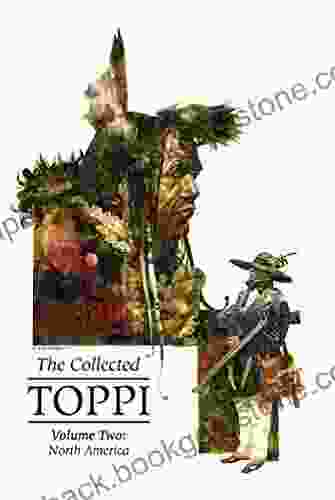
 Darrell PowellStep into a World of Sword-and-Sorcery Masterpieces: Exploring The Collected...
Darrell PowellStep into a World of Sword-and-Sorcery Masterpieces: Exploring The Collected... Damon HayesFollow ·2.8k
Damon HayesFollow ·2.8k Felix CarterFollow ·12.1k
Felix CarterFollow ·12.1k Chance FosterFollow ·4.4k
Chance FosterFollow ·4.4k William FaulknerFollow ·9.5k
William FaulknerFollow ·9.5k Brett SimmonsFollow ·19k
Brett SimmonsFollow ·19k D'Angelo CarterFollow ·4.3k
D'Angelo CarterFollow ·4.3k Vince HayesFollow ·12k
Vince HayesFollow ·12k Edward ReedFollow ·16.7k
Edward ReedFollow ·16.7k

 Bryan Gray
Bryan GrayThe Second Generation: Voices of the Holocaust
The Holocaust was one of the most horrific...
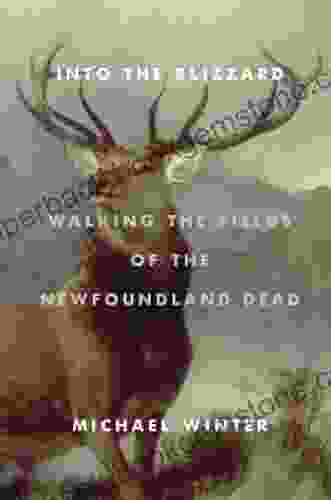
 Douglas Foster
Douglas FosterWalking the Fields of the Newfoundland Dead
In the heart of the rolling countryside of...
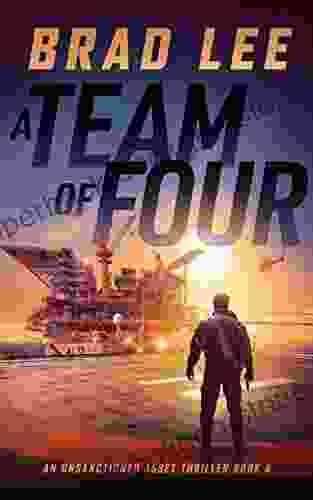
 Henry James
Henry JamesThe Unsanctioned Asset: A Gripping Thriller Set in a...
In the realm of espionage thrillers, The...
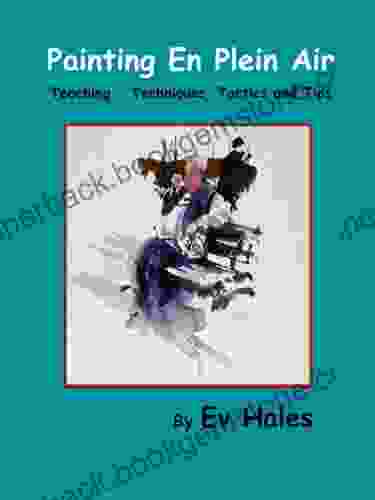
 Devon Mitchell
Devon MitchellPainting En Plein Air: Capturing the Essence of Nature on...
Painting en plein air, or painting...
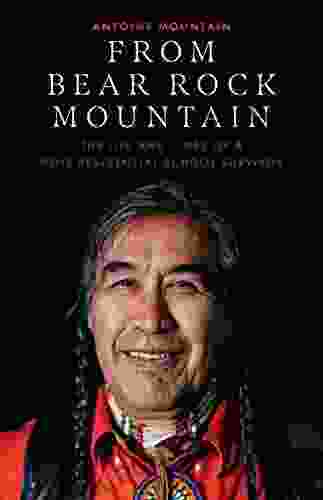
 Damon Hayes
Damon HayesThe Life and Times of Dene Residential School Survivor
Residential schools...

 Steve Carter
Steve CarterIndia Artists and the Avant Garde: 1922-1947
The term "avant-garde" is...
4.4 out of 5
| Language | : | English |
| File size | : | 20978 KB |
| Text-to-Speech | : | Enabled |
| Screen Reader | : | Supported |
| Enhanced typesetting | : | Enabled |
| Print length | : | 239 pages |
| Lending | : | Enabled |


